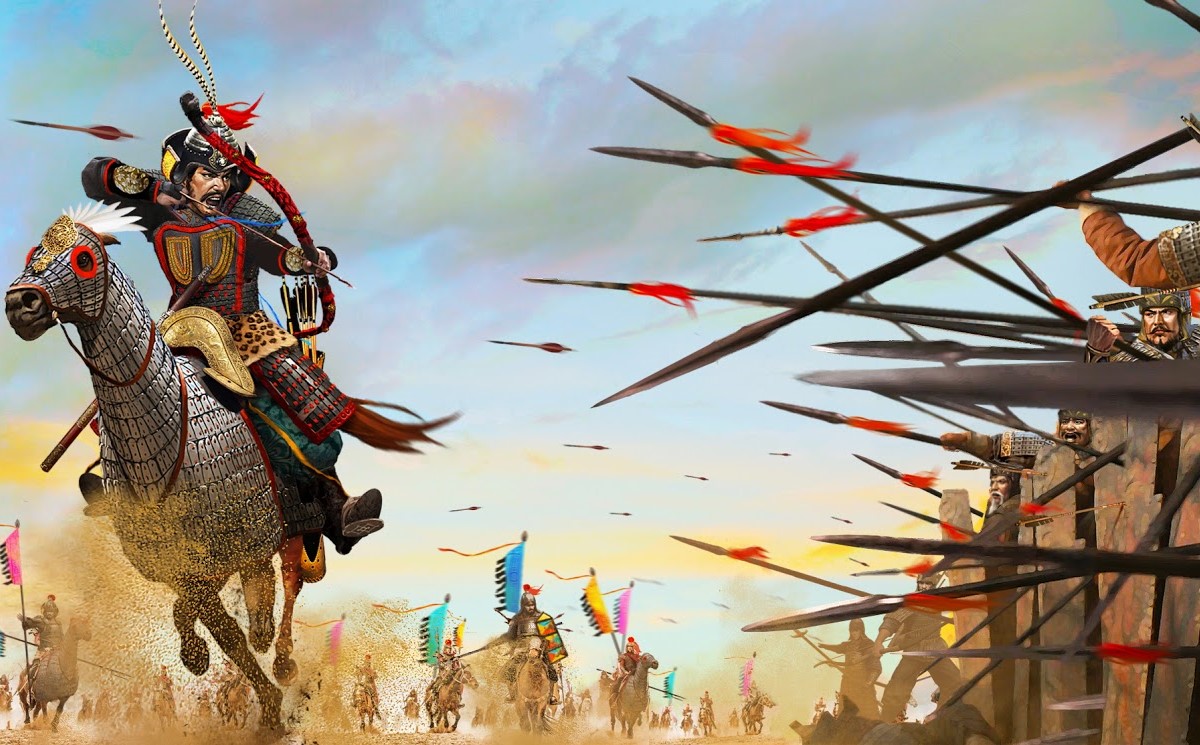
The Tang campaigns against the Western Turks were a series of military actions during the Tang Dynasty aimed at expanding Chinese influence and control over Central Asia. These campaigns, spanning from the 7th to the 8th century, were marked by strategic battles, alliances, and significant cultural exchanges. Why were these campaigns important? They were crucial for establishing the Silk Road, fostering trade, and spreading Buddhism. The Tang Dynasty's military prowess and diplomatic strategies played a pivotal role in shaping the political landscape of Central Asia. What can we learn from these campaigns? They offer insights into ancient warfare, diplomacy, and the interconnectedness of early civilizations. Dive into these 30 intriguing facts to uncover the legacy of the Tang Dynasty's western conquests.
Key Takeaways:
- The Tang Dynasty's military campaigns against the Western Turks reshaped Central Asia's history, influencing trade, culture, and power dynamics. They utilized alliances, diplomacy, and military strategies to achieve their goals.
- The Tang campaigns left a lasting legacy, spreading Chinese culture, influencing future dynasties, and paving the way for archaeological discoveries. They marked a significant chapter in the Tang Dynasty's history and continue to be studied today.
Tang Campaigns Against The Western Turks
The Tang Dynasty, one of China's most powerful and influential dynasties, embarked on several military campaigns against the Western Turks. These campaigns were pivotal in shaping the political landscape of Central Asia. Here are 30 fascinating facts about these historical events.
The Beginning of the Campaigns
The Tang Dynasty's campaigns against the Western Turks began in the mid-7th century. These military endeavors were driven by the desire to expand territory and secure trade routes.
- The Tang Dynasty launched its first major campaign against the Western Turks in 657 AD.
- Emperor Taizong of Tang initiated these campaigns to counter the growing power of the Western Turkic Khaganate.
- The Western Turks controlled crucial sections of the Silk Road, making them a significant target for the Tang Dynasty.
Key Battles and Strategies
The Tang military employed various strategies and fought several key battles to weaken the Western Turks' hold on Central Asia.
- The Battle of Irtysh River in 657 AD was a decisive victory for the Tang forces.
- General Su Dingfang led the Tang army to victory in this battle, capturing the Western Turkic Khagan Ashina Helu.
- The Tang utilized a combination of cavalry and infantry to outmaneuver the Turkic forces.
Diplomatic Maneuvers
Diplomacy played a crucial role in the Tang campaigns, with alliances and negotiations shaping the outcomes of many conflicts.
- The Tang Dynasty formed alliances with local tribes and states to isolate the Western Turks.
- Marriage alliances were also used to strengthen ties with neighboring regions.
- The Tang court sent envoys to negotiate with the Western Turks, offering favorable terms for surrender.
Impact on the Silk Road
The success of the Tang campaigns had a significant impact on the Silk Road, enhancing trade and cultural exchanges.
- Tang control over the Western Turkic territories ensured the safety of Silk Road trade routes.
- This control facilitated the exchange of goods, ideas, and cultures between East and West.
- The Tang Dynasty established military garrisons along the Silk Road to protect merchants and travelers.
Cultural and Technological Exchange
The campaigns led to increased cultural and technological exchange between the Tang Dynasty and the regions under Western Turkic control.
- Chinese culture, including art and literature, spread to Central Asia through these interactions.
- The Tang Dynasty adopted certain Turkic military techniques and technologies.
- Buddhism, which was already present in Central Asia, received further patronage from the Tang rulers.
Decline of the Western Turks
The Tang campaigns contributed to the decline of the Western Turkic Khaganate, reshaping the power dynamics of the region.
- The capture of Ashina Helu marked the beginning of the end for the Western Turkic Khaganate.
- Internal strife and fragmentation weakened the Western Turks further.
- The Tang Dynasty installed puppet rulers to maintain control over the conquered territories.
Long-term Consequences
The Tang campaigns had long-term consequences for both the Tang Dynasty and Central Asia.
- The Tang Dynasty's influence extended deep into Central Asia, establishing a lasting legacy.
- The campaigns paved the way for future Chinese dynasties to exert control over the region.
- The decline of the Western Turks allowed other nomadic groups to rise to power, such as the Uighurs.
Notable Figures
Several notable figures played key roles in the Tang campaigns against the Western Turks.
- Emperor Taizong, who initiated the campaigns, was a visionary leader and military strategist.
- General Su Dingfang, known for his tactical brilliance, was instrumental in the Tang victories.
- Ashina Helu, the Western Turkic Khagan, was a formidable opponent who ultimately fell to the Tang forces.
Legacy of the Campaigns
The legacy of the Tang campaigns against the Western Turks can still be seen in the historical and cultural landscape of Central Asia.
- The campaigns are remembered as a significant chapter in the history of the Tang Dynasty.
- They contributed to the spread of Chinese culture and influence across Central Asia.
- The military strategies and tactics used in these campaigns are studied by historians and military scholars.
Archaeological Discoveries
Recent archaeological discoveries have shed new light on the Tang campaigns and their impact on the region.
- Excavations along the Silk Road have uncovered Tang military outposts and artifacts.
- Inscriptions and documents from the period provide valuable insights into the campaigns.
- These discoveries help historians piece together a more comprehensive picture of the Tang Dynasty's military and diplomatic efforts.
Final Thoughts on Tang Campaigns
The Tang campaigns against the Western Turks were pivotal in shaping the history of Central Asia. These military efforts not only expanded the Tang Dynasty's influence but also facilitated cultural exchanges along the Silk Road. The campaigns showcased the Tang's military prowess and strategic acumen, leading to a period of relative stability and prosperity in the region. Understanding these campaigns provides valuable insights into the complexities of ancient geopolitics and the interconnectedness of different cultures. The legacy of these campaigns can still be seen today in the cultural and historical ties between China and Central Asia. By studying these events, we gain a deeper appreciation for the rich tapestry of human history and the enduring impact of the Tang Dynasty's ambitious endeavors.
Frequently Asked Questions
Was this page helpful?
Our commitment to delivering trustworthy and engaging content is at the heart of what we do. Each fact on our site is contributed by real users like you, bringing a wealth of diverse insights and information. To ensure the highest standards of accuracy and reliability, our dedicated editors meticulously review each submission. This process guarantees that the facts we share are not only fascinating but also credible. Trust in our commitment to quality and authenticity as you explore and learn with us.


